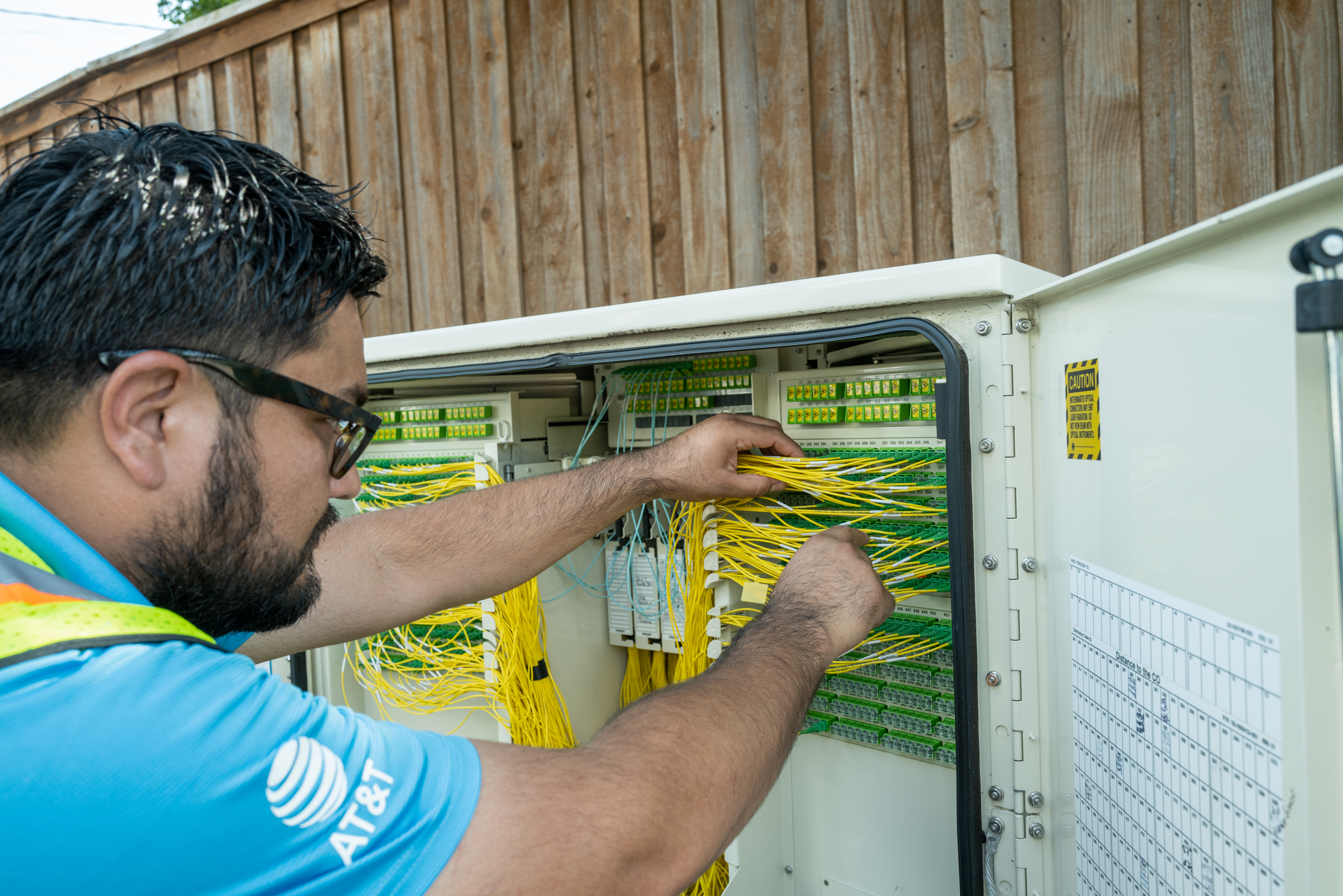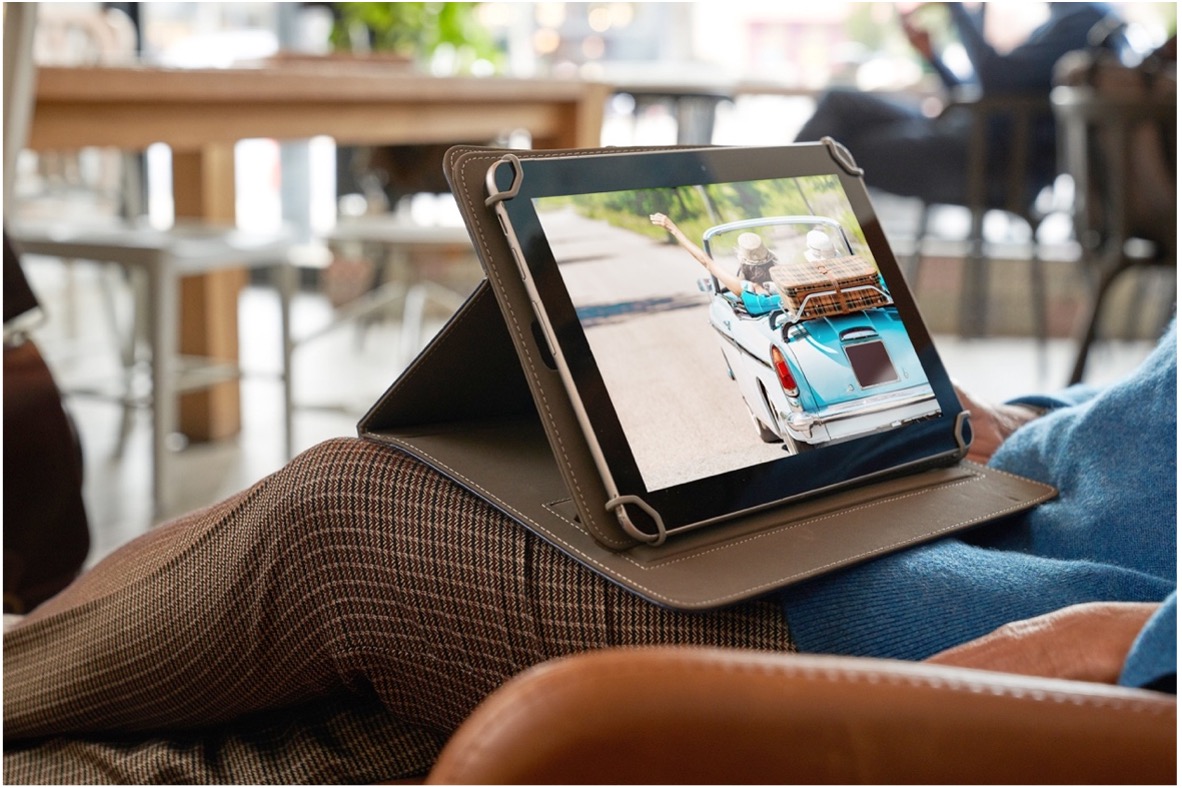If you have a need for speed (when it comes to connectivity), you will want to know about 5G and fiber optic internet – two technologies that enable the fastest connectivity available. This article will help you learn more about how they work together and why both are vital to keeping you connected. First, you will want to understand how 5G and fiber internet are defined.
What is fiber optic internet?
Fiber optic technology transmits data by sending light along thin glass fibers. Because of that, Fiber internet has the potential to transmit data at much higher speeds than DSL or cable-based internet, which transmit information by sending electricity over copper wires. You can read more about fiber optic internet here.
While your exact internet speed can vary depending on a wide range of factors, the top internet speed powered by AT&T Fiber can deliver up to 134x faster upload speeds than top cable speeds.1

What is 5G?
5G is the fifth-generation technology standard for broadband cellular networks. 5G technology enables faster data rates with lower latency in transmitting data than previous generations. As 5G becomes more widely available, it is expected to improve the quality and efficiency of a wide range of products and services you might enjoy today, as well as future products and services in areas such as telemedicine and self-driving cars.2 You can read more about 5G here.
Why is 5G so powerful?
Some 5G services have the potential to provide coverage areas with data speeds up to 100x faster than 4G. That translates to an almost instantaneous response time. For example, a feature-length movie that takes six minutes to download with 4G could take as little as fifteen seconds to download with 5G. 5G technology will also serve an increasingly important role for America’s first responders. In particular, 5G will be one of the many technologies behind AT&T’s expansion of FirstNet®, the only nationwide wireless broadband communications platform built with and for America’s first responders.
What is the future of 5G?
5G technology requires telecoms to upgrade their cellular networks. To enjoy the benefits of 5G, consumers must also have devices capable of accessing the new networks.
AT&T 5G is currently offered in more than 18,000 cities and towns. In some areas, AT&T now offers 5G+, which enables even faster speeds. You might experience high-band 5G+ with lightning-fast speeds in high-traffic areas like airports, stadiums, venues, and entertainment districts with a compatible device and rate plan with 5G access. 3 You can see if AT&T 5G or 5G+ are available near you by checking out the AT&T wireless coverage map here.

How Fiber and 5G Technologies Work Together
- Fiber is the true backbone of wireless technology. Fiber connects 5G cell towers back to the internet and is capable of supporting the demands of the 5G wireless network. Copper wirelines are simply not fast enough to deliver the speeds promised by 5G service. For this reason, 5G technology could not function without a robust fiber optic network.
You may hear competitors of AT&T tout their 5G network, but none of them have the fiber footprint that AT&T has. In fact, AT&T Fiber is available in 21 states, and the expansion is ongoing. You can check out current AT&T Fiber coverage and check availability at your address here.
- The best home internet option for you will depend on several factors. You may have heard of wireless broadband service for home internet. With this type of service, a cellular provider sends signals in all directions, and a Wi-Fi gateway receives those signals and turns them into a home internet connection. If you live in an area with strong cellular infrastructure, a 5G home internet connection may be available. Otherwise, wireless broadband may be powered by the LTE network or a mix of 5G and LTE.
Together, 5G and fiber optic technologies can provide the fastest connectivity for wireless and broadband services available, and AT&T is leading the way.
- Comparison of Internet 5000 wired upload speed to cable 1 Gig and 1.2 Gig service w/ upload speed of 35 Mbps. For more info go to www.att.com/speed101.
- https://www.fcc.gov/5g-faqs
- AT&T 5G requires compatible plan and device. 5G not available everywhere. 5G+ is offered in limited locations in specific cities. 5G+ access varies by device. Go to att.com/5Gforyou for details.
This article is AT&T sponsored content written by Katherine Wrobleski, a TechBuzz contributor. The statements in this article are her own and don’t necessarily represent the positions, strategies, or opinions of AT&T.





